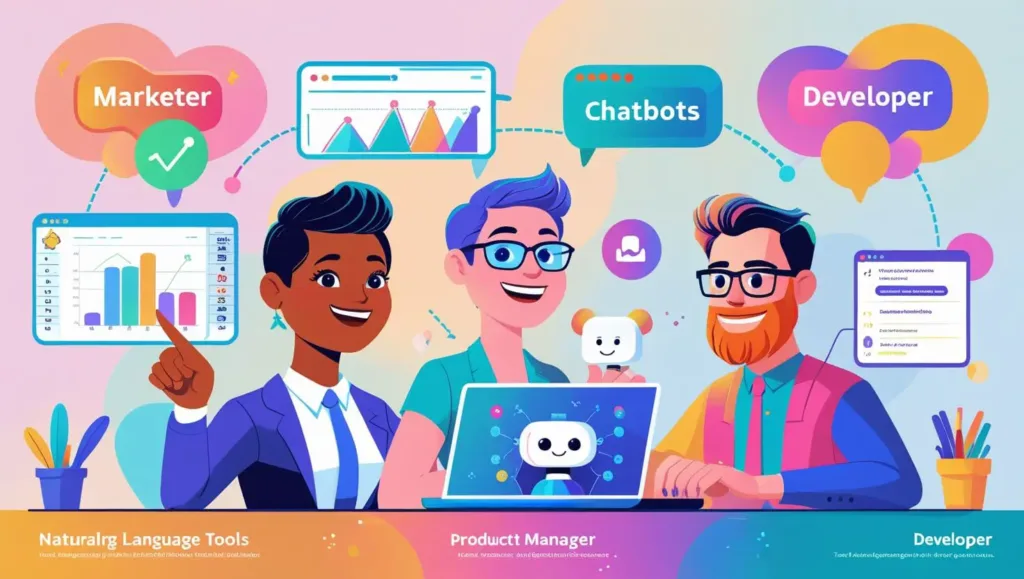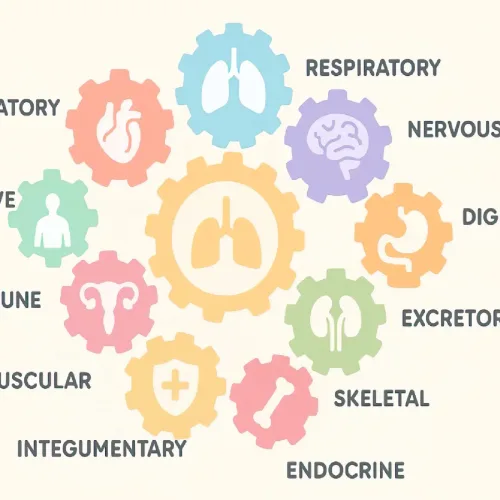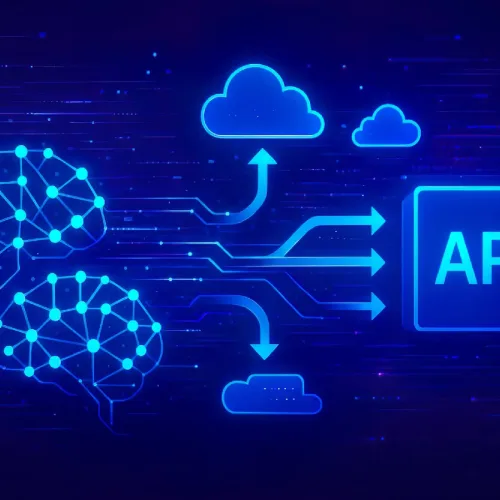Have you ever contemplated how Siri hears your vocal instructions? Or how Google Translate converts phrases from one language to another in seconds? Natural Language Processing (NLP) lies behind all these wonders.
Natural Language Processing is a subfield of artificial intelligence. It makes it possible for computers to understand human language. They can also interpret and produce it. It’s like training machines to make them capable of “speak” and “listen” like a human.
NLP, however, is not a single technology. There are three major constituents:
- Natural Language Processing (NLP): The term that encompasses all computer-human language interactions
- Natural Language Understanding (NLU): How machines understand what we mean when we speak or write
- Natural Language Generation (NLG): How computers create human-like text or speech responses
Why is this important today? We are in the era of AI-driven virtual assistants that manage customer calls. Marketing teams sift through thousands of social postings to decide brand sentiment. Product teams develop chatbots that are virtually human-like. Text analysis has become central to all industries. From health to finance, from commerce to education, companies are handling terabytes of text data every day. NLP enables this at scale.
Why Natural Language Processig Matters: Real Impact by Audience
NLP is not just for tech experts—it is a game-changer for professionals across fields. Below, we explore how NLP delivers value to specific audiences, with practical examples to illustrate its impact.

1. For Marketers: Sentiment Analysis and Customer Insights
NLP is not just for tech experts—it is a game-changer for professionals across fields. Below, we explore how NLP delivers value to specific audiences, with practical examples to illustrate its impact.
For Marketers: Sentiment Analysis and Customer Insights
Marketers benefit from knowing what people think, and NLP makes this more accessible than ever before. Sentiment analysis is a key NLP task that examines text from reviews, posts, or surveys to see whether attitudes are positive, negative, or neutral. For example, a consumer retail company can use NLP to read through thousands of X posts that talk about their products, recognizing that 70% of the comments are favorable but noting repeated issues with shipping delays. This information facilitates customizing campaigns and improving the customer experience.
2. For Product Teams: Chatbots and Search Functionality
Product teams develop more intelligent, user-centric features with NLP. NLP-driven chatbots can manage customer queries 24/7, from resolving FAQs to walking users through troubleshooting. NLP also improves search functionality through comprehension of user intent. When, for example, a user searches for “best noise-canceling headphones” on an e-commerce platform, NLP ensures that the search engine favors products that are relevant, even though the query is asked in a conversational tone.
3. For Developers/Learners: Building Text-Based AI Projects
Developers can create some really interesting projects with NLP in the future, from simple text classifiers to intricate language models. Using easily accessible libraries like NLTK or spaCy, one can start developing without having deep coding experience. One can, for example, create a program that categorizes news articles based on content or a program that extracts significant entities (e.g., names or locations) from a piece of writing.
For example, a newcomer might employ Python and spaCy to create a program that extracts company names from customer comments and uses this as a stepping point to more advanced AI applications.
Core Tasks & Techniques (with Clear Examples)
Natural language processing powers a variety of applications that facilitate the analysis and generation of texts. Below are four significant techniques with a working example each to show their functionality.
1. Text Classification (Spam Filters, Email Sorting)
Text categorization categorizes text documents into categories or labels. It is one of the most common NLP applications you face daily.
- Email Spam Detection: Your email provider uses text classification to sort incoming messages. The system analyzes content, sender information, and patterns to determine if an email is spam, promotional, or important.
- Auto Sorting of Emails: Gmail classifies emails into Primary, Social, Promotions, and Updates categories. These are decided through the learning from user actions and content of the emails.
- Content Moderation: The social networking sites classify texts to detect and delete malicious content, hate speech, or unsuitable posts in an automated manner.
2. Named Entity Recognition (NER) in News or Social Media
Named entity recognition recognizes and categorizes certain entities in text, like people, locations, organizations, dates, and amounts of money.
- News Analysis: News aggregators use NER to extract key information from news articles. NER, upon processing a news article, can find:
- Person: “Elon Musk”
- Organization: “Tesla”
- Location: “Austin, Texas”
- Date: “March 15, 2024”
- Social Media Monitoring: NER is utilized by companies to track social media for any mention of their business, competitors, and important people.
- Financial Document Processing: Banks use NER to extract data from loan applications. They automatically determine names, addresses, employment information, and financial amounts. For example, when you read “Apple reported $81.4 billion in quarterly earnings in Cupertino yesterday,” NER identifies:
- Organization: Apple
- Money: $81.4 billion
- Location: Cupertino
- Time: yesterday
3. Sentiment Analysis (Brand Reviews, Social Listening)
Sentiment analysis determines the emotional tone of text, typically categorizing content as positive, negative, or neutral.
- Analysis of Product Reviews: E-commerce sites evaluate consumer reviews to decide product satisfaction. Instead of manually sorting through thousands of reviews, sentiment analysis instantly presents insights.
- Social Media Monitoring: Organizations track social platform-based sentiment towards their brands. Unexplained strength of negative sentiment can be a potential PR crisis that must be acted upon right away.
- Customer Support Improvement: Support teams use sentiment analysis to rank tickets. Highly negative feedback gets faster response times.
- Real scenario: When Apple comes up with a new iPhone, its teams observe social sentiment in social media. Favorable comments on camera quality might decide the marketing promotions, and unfavorable comments on battery life might inform product fine-tuning.
Below is a snapshot of common NLP examples and applications:
| Task | Description | Example Use Case |
|---|---|---|
| Text Classification | Assigning labels to text | Spam filters, topic sorting |
| Named Entity Recognition | Detecting names of people, places, or dates | Extracting company mentions |
| Sentiment Analysis | Gauging emotional tone | Brand reviews, social listening |
| Summarization & Translation | Condensing or converting language | Support ticket summaries, multilingual sites |
How Natural Language Processing Works Behind the Scenes
Ever wondered how NLP turns raw text into actionable insights? Here is a simplified look at the process, broken into four basic steps.
- Preprocessing: We preprocess raw data to delete punctuation, make lowercase, and correct misspellings. For example, “I LOVE this Product!!!” will be “I love this product.”
- Tokenization: We divide the written content into small pieces (tokens), such as words or phrases. “I love this product” is tokenized to [“I”, “love”, “this”, “product”].
- Embeddings: Tokens are transformed to numerical vectors that represent their meaning. Models such as Gemini produce embeddings that are aware of context; therefore, “bank” from “river bank” and “bank account” are different.
- Models: Intelligent models such as transformers (e.g., BERT) process embedding to accomplish tasks such as classification or translation. They are trained to learn patterns from huge datasets to predict outputs.
- Example Workflow: To classify a review as either a positive or a negative review, the data are first preprocessed. Then, they are tokenized and converted to embeddings. These embeddings are fed to a transformer-based model. This model outputs a sentiment score.
| Step | Description | Example |
|---|---|---|
| Preprocessing | Clean and normalize text | "I love this product" → "i love this product" |
| Tokenization | Split text into individual tokens | "i love this product" → ['i', 'love', 'this', 'product'] |
| Embedding | Convert tokens into numerical vectors | ['i', 'love', 'this', 'product'] → [[0.1, 0.2], [0.3, 0.4], ...] |
| Models | Use embeddings to predict outcomes | [[0.1, 0.2], [0.3, 0.4], ...] → "Positive" |
Common Beginner Questions & Clarifications
Yes, but it is simpler to get to than you might think! High-level libraries such as NLTK, spaCy, and Hugging Face simplify things so you don’t have to roll your own complex algorithms yourself. New users can start with Python and pre-trained models, and power users can look into training models in greater depth.
AI includes the entire domain of creating intelligent systems. Machine learning (ML) is a subdomain of AI, training the model with data. NLP (natural language processing) is a subdomain of AI/ML that deals with applications related to languages specifically. For example, ML can predict stock prices, and NLP can deal with the sentiment of text.
You can create a simple NLP project (e.g., a sentiment analyzer) in a weekend with open-source tools. More complex projects like customized chatbots will require weeks to months, depending on your coding experience and the scope of the project.
Free Tools/Platforms to Start
- NLTK: A Python library for basic NLP tasks like tokenization and text classification.
- spaCy: Fast and user-friendly, great for NER and sentiment analysis.
- Hugging Face: Offers pre-trained models and tutorials for beginners.
A Guide to Learn More & Next Steps
Ready to dive deeper into NLP? Here are trusted resources to continue your journey.
- Authoritative Blogs:
- Analytics Vidhya: Practical tutorials for beginners, like “Getting Started with NLP.”
- Sebastian Ruder’s Blog: Deep dives into NLP research, ideal for intermediate learners.
- Stanford NLP Group: Academic insights and free resources on cutting-edge NLP.
- DeepLearning.AI: Beginner-friendly articles and videos on AI and NLP.
- Courses/Tutorials:
- Coursera NLP Specialization: A comprehensive course covering NLP fundamentals and projects.
- fast.ai: Practical, code-first NLP courses for hands-on learners.
- Hugging Face Introductory Guides: Free tutorials with code examples for building NLP models.
Mini Examples: See Natural Language Processing in Action
Let’s bring NLP to life with two beginner-friendly examples using Python and popular libraries.
1. Sentiment Detection on a Review with spaCy or Hugging Face
Here is how to analyze the sentiment of a product review using Hugging Face’s pre-trained model.
from transformers import pipeline
# Load sentiment analysis model
classifier = pipeline("sentiment-analysis")
# Analyze a review
review = "The camera quality is fantastic, but the battery life is terrible."
result = classifier(review)
# Output result
print(result) # [{'label': 'NEGATIVE', 'score': 0.85}]This code loads a pre-trained model, preprocesses the review, and prints a sentiment label with a confidence score. We observe that the review leans towards the negative side due to the complaint regarding the battery.
2. Tiny Chatbot Example: User Input → Model Response
Let’s create a simple chatbot using Hugging Face’s conversational model.
from transformers import pipeline
# Load conversational model
chatbot = pipeline("conversational")
# Simulate user interaction
user_input = "Hi, what's the weather like today?"
response = chatbot(user_input)
# Output response
print(response) # Generates a natural reply, e.g., "I'm not a weather bot, but I can chat about other things!"This script takes user input and generates a response, mimicking a basic chatbot. It’s a great starting point for building more complex conversational AI.
Conclusion
In my opinion, natural language processing is more than a buzzword in the tech industry. It is a game-changing tool. It is revolutionizing the way marketers, product teams, and developers deal with language. From sentiment analysis of the customer to developing chatbots, NLP provides unlimited possibilities. Whether you are a newcomer or a long-time expert, the time to learn NLP’s potential is now.
Ready to get started? Practice some code examples in Hugging Face or spaCy, or see our recommended courses to make your first NLP project. Comment below with any thoughts or questions, or tweet about your NLP journey on X with #LearnNLP!




